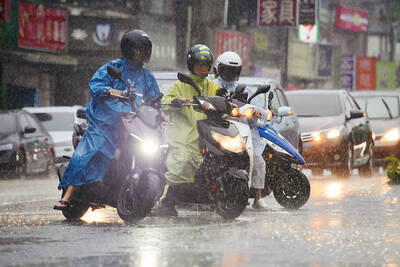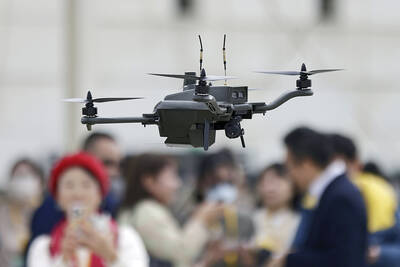The euro fell, ending its longest weekly rally in nine months versus the dollar, on concern stress tests of EU banks failed to identify sources of weakness that would aggravate the region’s debt crisis.
The 16-nation currency depreciated against the majority of its most-actively traded counterparts, slumping the greatest amount versus growth-sensitive currencies such as the Australian and New Zealand dollars. Tests showing that only seven banks flunked the EU’s crisis scenario failed to ease concern lenders may lack sufficient capital, pushing the euro to reverse gains recorded earlier in the week.
“The euro’s definitely had its ups and downs,” said Vassili Serebriakov, a currency strategist at Wells Fargo & Co in New York. “Markets were questioning whether the stress tests were stressful enough, in other words, whether they were stringent enough.”
The euro fell 0.2 percent this week to US$1.2909 on Friday in New York, from US$1.2930 on July 16. The yen weakened 1 percent to ¥87.46 per US dollar from ¥86.57 last week. The euro slumped 3.1 percent to A$1.4414 versus Australia’s currency and 2.5 percent to NZ$1.775 against its New Zealand counterpart.
The euro gained on Friday as traders closed out bets that the currency would weaken further when equities rallied. The yen extended its decline versus the dollar as Japanese policymakers signaled for a third day that a stronger currency poses a danger to growth, spurring speculation they will take steps to counter that risk.
The pound advanced against the US dollar for the second straight week amid signs the UK economic recovery is taking hold, potentially reducing the need for the central bank to extend stimulus measures.
The pound gained 0.8 percent to US$1.5423 as of 4:27pm in London on Friday, from US$1.5301 on July 16. It appreciated 1.4 percent to £0.8330 per euro.
South Korea’s won and Malaysia’s ringgit led weekly gains among Asian currencies on signs global investors are seeking higher returns in emerging markets because of their faster economic growth.
The won rose 0.4 percent this week to 1,199.15 per US dollar in Seoul, according to data compiled by Bloomberg. The ringgit and the Singapore dollar each appreciated by the same amount in the week to 3.1965 and S$1.3709, respectively.
The New Taiwan dollar, which was little changed for the week, gained 0.1 percent to NT$32.152 on Friday.
“Hot money is pouring into the stock market,” said Eric Hsing, a debt trader at First Securities Inc (第一金證券) in Taipei. “The central bank will continue to slow the Taiwan dollar’s growth to keep its edge on exports.”
The Indian rupee climbed 0.4 percent on Friday to 46.945 per US dollar, paring its loss for the week to 0.4 percent, after a report showed investors poured money into equity funds focused on India and China in the week ended Wednesday.
The baht strengthened 0.2 percent on Friday to 32.22 per US dollar, paring its weekly loss, on speculation foreign funds are flowing into Thailand and after the improved profit outlook by US companies eased concern the global economic recovery is faltering.
Elsewhere, Indonesia’s rupiah and Philippine peso are little changed for the week at 9,048 and 46.315 against the US dollar, respectively.

The combined effect of the monsoon, the outer rim of Typhoon Fengshen and a low-pressure system is expected to bring significant rainfall this week to various parts of the nation, the Central Weather Administration (CWA) said. The heaviest rain is expected to occur today and tomorrow, with torrential rain expected in Keelung’s north coast, Yilan and the mountainous regions of Taipei and New Taipei City, the CWA said. Rivers could rise rapidly, and residents should stay away from riverbanks and avoid going to the mountains or engaging in water activities, it said. Scattered showers are expected today in central and

COOPERATION: Taiwan is aligning closely with US strategic objectives on various matters, including China’s rare earths restrictions, the Ministry of Foreign Affairs said Taiwan could deal with China’s tightened export controls on rare earth metals by turning to “urban mining,” a researcher said yesterday. Rare earth metals, which are used in semiconductors and other electronic components, could be recovered from industrial or electronic waste to reduce reliance on imports, National Cheng Kung University Department of Resources Engineering professor Lee Cheng-han (李政翰) said. Despite their name, rare earth elements are not actually rare — their abundance in the Earth’s crust is relatively high, but they are dispersed, making extraction and refining energy-intensive and environmentally damaging, he said, adding that many countries have opted to

FORCED LABOR: A US court listed three Taiwanese and nine firms based in Taiwan in its indictment, with eight of the companies registered at the same address Nine companies registered in Taiwan, as well as three Taiwanese, on Tuesday were named by the US Department of the Treasury’s Office of Foreign Assets Control (OFAC) as Specially Designated Nationals (SDNs) as a result of a US federal court indictment. The indictment unsealed at the federal court in Brooklyn, New York, said that Chen Zhi (陳志), a dual Cambodian-British national, is being indicted for fraud conspiracy, money laundering and overseeing Prince Holding Group’s forced-labor scam camps in Cambodia. At its peak, the company allegedly made US$30 million per day, court documents showed. The US government has seized Chen’s noncustodial wallet, which contains

SUPPLY CHAIN: Taiwan’s advantages in the drone industry include rapid production capacity that is independent of Chinese-made parts, the economic ministry said The Executive Yuan yesterday approved plans to invest NT$44.2 billion (US$1.44 billion) into domestic production of uncrewed aerial vehicles over the next six years, bringing Taiwan’s output value to more than NT$40 billion by 2030 and making the nation Asia’s democratic hub for the drone supply chain. The proposed budget has NT$33.8 billion in new allocations and NT$10.43 billion in existing funds, the Ministry of Economic Affairs said. Under the new development program, the public sector would purchase nearly 100,000 drones, of which 50,898 would be for civil and government use, while 48,750 would be for national defense, it said. The Ministry of